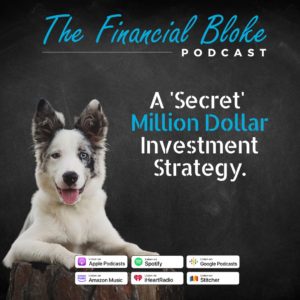If you want to become a successful investor you need to learn the key strategies for generating long term sustainable success.
Warren Buffet famously said, “Investing is simple but it isn’t easy,” and I am sorry to say there aren’t any shortcuts. Investing success requires hard work, discipline, delayed gratification and a whole lot of patience.
But what I can tell you is that there are proven strategies like compounding interest that, if you are patient and have time, have the potential to make you millions.
Today I am going to share with you one of the most simple but beautifully effective strategies which when teamed up with compound interest could become your million dollar strategy.
It is called a Regular Savings Plan (RSP) and it was one of the secrets of my success as both an investor and adviser. The great thing is, it’s simple, it’s not rocket science and it works, whatever your budget.
So how does it work? Let’s say you have a spare $50K sitting in the farm working account that you imagine you could invest for the long term.
First let’s assume that you deposit that $50K into a high yielding bank account and leave it there for the next 20 years. Current bank interest rates are around 3% p.a so after 20 years simple maths tells us that excluding any fees or taxes, there should be around $90K. You have almost doubled your money! Sounds great but when you take into account inflation over that period, at the absolute best you might have broken even. That’s not a great strategy to build wealth!
Another option would be to invest that money into a diversified share portfolio rather than leaving it in the bank. Assuming for the purposes of this example it earned an average of 8% p.a. over the 20 years, again simple maths would show you should have a whopping $250K. Five times more than when you started, which you’d have to agree is a pretty good outcome.
Now what if we add in the Million Dollar Strategy, a Regular Savings Plan?
Assume you invested that $50k in the investment portfolio as above but you also decided to use a Regular Savings Plan, and you had the capacity to add $1,500 p.m. from the farm cashflow into the portfolio. Using our simple maths again shows there should be a whopping $1.1m in 20 years!
If you are looking at going through a family succession in 20 years, what do you think will give you the most options? $90K in the bank, or $250K, or $1.1m??
You might not have $50K now or you might not have $1,500 per month but a Regular Savings Plan remains a powerful strategy whatever your budget. How much you invest, and how often you invest, is entirely up to you and that ultimately comes down to what you can afford in your unique situation.
And as always, to achieve the full benefits of making regular contributions and from compounding returns, the earlier you start investing the better.
Cheers, Ben
Disclaimer: The information contained in this column is general in nature and for education purposes only. It is not financial advice. No one should act on the information without appropriate specific advice for your particular circumstances. Ben Law is a former financial advisor but is no longer licensed and cannot and will not give you specific or personal advice in this column.

